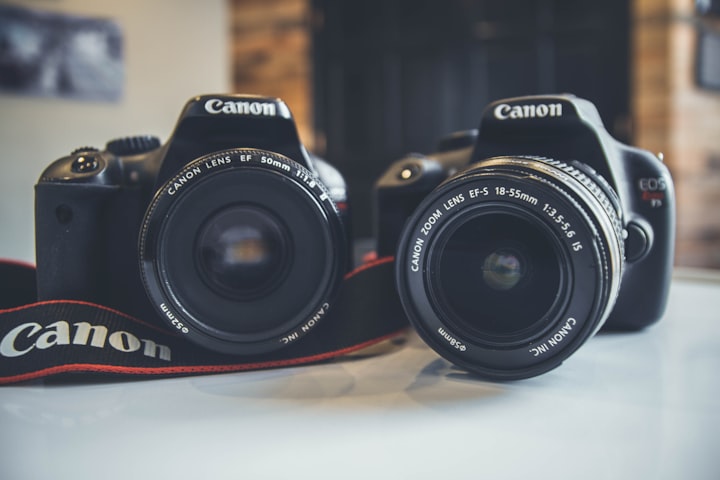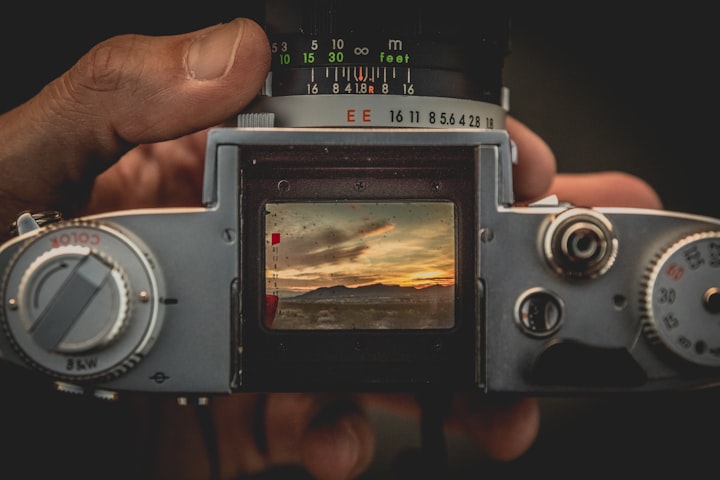
The Camera Body is the main chassis of the camera that houses the film plane or the imaging device as well as the main camera functions such as film claws or the digital ASA and shutter functions. The body does not include the lens itself.
The camera body is the main part of the camera. Basically, it contains the metering system, the viewfinder system, the shutter, the shutter controls, the shutter release button, and in most models, the built-in flash. In film-based cameras, it has the film receptacle, the film spool, film advance lever, film release, and the ISO/ASA indicator switch. In digital cameras, it houses the electronics and exposure controls, the removable memory card interface, battery, image viewer, interface ports, and the electronic sensor. Except for the SLRs and Medium-format cameras, the lens and aperture is permanently affixed to the body. Regardless of the design, the body has one overriding requirement: it has to be light-proof. A small seepage will ruin an otherwise perfect picture. In the case of underwater cameras, an obvious additional requirement is that it should be waterproof as well. Some camera models are built as reusable waterproof cameras. Most models would require an external waterproof shell to encase the regular (non-waterproof) body (and lens) to make it operate underwater.
We’ve already discussed the viewfinder systems in most of the camera designs so we won’t be discussing that in this section. The following items discussed will familiarize you with the different controls found on the camera body. Where applicable, we will distinguish which are found in manual film-based cameras and those found in digital cameras. Indepth discussion about using the various controls will be found in succeeding lessons.
The Shutter
A shutter is a device that allows light to pass for a determined period of time, either exposing photographic film or a light-sensitive electronic sensor to light to capture a permanent image of a scene. In the early days of photography, the shutter was found in the front of the lens. In modern cameras, the shutter is either just behind the lens, or just in front of the film or electronic light sensor (for digital cameras).
There are two basic types of camera shutter: mechanical shutters and electronic shutter.
Electronic Shutters
Electronic shutters can turn each pixel on/off simulating the shutter speed. This is more expensive and is available on CMOS (Complementary Metal Oxide Semiconductor) sensors only. CCD (Charge Coupled Diode) sensors still require a mechanical shutter to block off the light while the image is shifted out from the sensor to internal memory (jsut like a bucket brigade).
Mechanical Shutters
There are two basic types of mechanical shutters: the focal-plane shutters, and the leaf shutters. Each are discussed separately.
Focal-plane shutters are usually implemented as a pair of cloth, metal, or plastic curtains which shield the film from light. The curtain partitions opens and closes (not at the same time; one after another) after the correct exposure time. Since these are located inside the camera body (just in front of the film (or digital image sensor) they allow the use of interchangeable lenses without requiring the expense of a separate shutter for each lens. The down side is that since the curtains don’t open at the same time, fast moving objects get distorted. Also, the mechanical structure is noisy (not good for candid or clandestined photography), results in camera shake, and has a limited life-span.
A leaf shutter is a type of camera shutter consisting of a mechanism with one or more pivoting metal leaves which normally does not allow light through the lens onto the film, but which when triggered opens the shutter by moving the leaves to uncover the lens for the required time to make an exposure, then shuts. Simple leaf shutters typically have only one shutter speed and are commonly found in disposable cameras. Some have more than one speed. Shutters for newer digital cameras are a combination of electronic and mechanical timings. Some cameras employ a 100% electronic shutter, created by turning on and off the imaging sensor’s signals. Digital cameras that can also take video implement this method for their video modes. For single-frame photography then either mechanical or mechanical+electronic methods are used.
Shutter lag is the time between pressing the shutter release and the camera responding by taking the picture. While this delay was insignificant on most film cameras and some digital cameras, it may be a problem when trying to capture fast-moving subjects (e.g. sports cars, martial arts, tennis, etc.). Today, release shutter delay might be not an issue anymore. This is because the release lag has progressively diminished. Release lag of Bridge camera Pentax X90 is only approximately 0.021 second.
A shutter cycle is the process of the shutter opening, closing, and resetting to where it is ready to open again. The life-expectancy of a mechanical shutter is often expressed as a number of shutter cycles.
About the Creator
Olaoluwa
Ola was born 24th May 2011
He is a Story teller, Reasearcher, Poem Writer and lot more






Comments (1)
Very informative, try to put in bold those important headings so as to reach many viewers. You can also join my team and subscribe for free.